|
|

Scott Oliver – Class of 1981
President, Centerline Audio Visual, Inc., Hendersonville, Tennessee
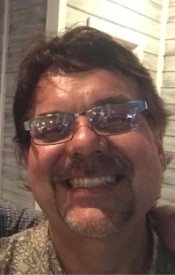 One of the most exciting times in my life occurred in 1978 when I became a student at what I called “The Space Station,” East Burke High. At the time it was only five years old, and, as a kid living in Drexel, I had never seen anything like it -- except of course Freedom High. Just the look of the structure and the fact that I would be part of it spawned excitement and wonder in me. To this day when I travel back to Burke County to see family and friends, driving past EBHS on I-40 revives the romanticism associated with that time in my life and brings back the most wonderful of memories. I had no idea at the time that the relationships and skills that would be rooted there would be with me for the rest of my life. Terry Cole, Mark Perrou, Brink Isaacs, Stan Pons, Terry Bedford, and Mike Albright are all responsible for the brightest of memories for me. To this day we all still talk, and I consider these folks more than friends; they are family to me. I am thankful for them all.
One of the most exciting times in my life occurred in 1978 when I became a student at what I called “The Space Station,” East Burke High. At the time it was only five years old, and, as a kid living in Drexel, I had never seen anything like it -- except of course Freedom High. Just the look of the structure and the fact that I would be part of it spawned excitement and wonder in me. To this day when I travel back to Burke County to see family and friends, driving past EBHS on I-40 revives the romanticism associated with that time in my life and brings back the most wonderful of memories. I had no idea at the time that the relationships and skills that would be rooted there would be with me for the rest of my life. Terry Cole, Mark Perrou, Brink Isaacs, Stan Pons, Terry Bedford, and Mike Albright are all responsible for the brightest of memories for me. To this day we all still talk, and I consider these folks more than friends; they are family to me. I am thankful for them all.
From an early age I was passionate about music, guitars, cars, mechanical contraptions, and all that is part of a bigger world outside my microcosm of Burke County. East Burke and the instructors there prepared me for a journey I had no idea I would take.
The most influential people in my life at the time were Kathryn Siphers, Lynn McCotter, and Chet Pack. Miss Siphers was my orchestra teacher at Drexel, and what a blessing it was to have her at East Burke as well. Lynn McCotter taught Stage Band, and Chet Pack was my drafting teacher. Everything I do in my career and life today can be traced back to them. And what a crazy life it was back then! During the day I would be in Orchestra, Stage Band, Drafting, and all the other required academic courses, and at least three nights per week I was playing in a band called Ambition in the various honky tonks somewhere in Burke or the surrounding counties. I could write a book just on the stories of that alone. In fact, I may do that someday. While everyone else at EBHS was sound asleep, we were playing rock and roll in some of the roughest places around at the time. Even Mr. Pack would come out and watch us at the 1849 Tavern in Hickory. It was commonplace to be on stage and see Mr. Pack sitting at a table watching us play. In one funny story, Todd Temple, a member of Ambition, and I were sitting at our drafting tables during class talking about last night’s gig when Mr. Pack came up and said, “Look guys, if you’re not going to make this class about drafting, you’re gonna make it about acting. If you’re not gonna draw, you’re gonna act like you are drawing. So, what time to do you guys start playing tonight?” LOL!
I often thought we were looked down on as the dregs of the school, but I realized that was not the case at all. I think we were just misunderstood. I remember coming into Mr. Reynolds Hollifield’s math class one Friday morning completely exhausted from school, work (I was working in the dietary department at Valdese Hospital), and doing late-night gigs all week, only to wake up from hearing everyone laughing at me for falling asleep on my desk and snoring. Mr. Hollifield never said a word. From that day on, I loved that man! However, all the typical required courses were just not for me. My goal was to pass, and that was good enough for me. I was making all A’s in my music, drafting, and computer classes while struggling in English, math, and all the other academic courses. It’s not that I didn’t care; it was that I just didn’t care enough about those courses to sacrifice my time doing what I loved to do otherwise. There’s only so much time in a day and to each his own.
Miss Siphers was exceptional. I think everyone who was in her class had a deep respect for her. She did not suffer fools, and she did not allow anything but excellence. She demanded our very best, and she got it. I liken her to Jack Black in the movie “School of Rock” singing, “You’re not hardcore unless you live hardcore.” She was hardcore. She left this world with a string of Superior ratings from all the band contests both at Drexel and at East Burke. She was all business. Talk about a legacy of excellence! I still use everything she taught me to this day.
Lynn McCotter was the polar opposite to Miss Siphers. While Miss Siphers was an educator and a conductor, McCotter was a player first and foremost--a great player in fact, I now realize he was at East Burke just for the gig, not even realizing that his greatness as a player was rubbing off on us, especially me . Not that he was slack, but he struggled with the dynamics of teaching. It was in stage band with McCotter that I got my first taste of playing big band jazz. We were playing charts from Duke Ellington, Count Basie, Stan Kenton--all the biggies of jazz--in high school, no less!
After graduating from East Burke in 1981 with a 2.2 GPA, I attended community college at WPCC and later CVCC and started making the Dean’s List on a regular basis. I had basically stopped playing because all my friends had moved on to higher education, so I figured I would do the same. After about four years of changing my major from Business to Accounting to Mechanical Engineering, Terry Cole introduced me to a group of musicians from Hickory looking for a guitar player. I of course jumped at the chance and joined what would become the band Attak. During that era of my life, I started hanging out at a couple of local music stores. One day in walked Lynn Duckett who had been at East Burke a few years behind me. I had heard of him going to Musicians Institute (MI) in Hollywood, California, to study at GIT, the Guitar Institute of Technology, but that was all I had known. I had seen all the GIT ads in Guitar Player magazine but figured it was too far away for me. At that time I did not know Lynn that well, but when he walked in that day after being at MI for only three months (he was home for Christmas vacation) and sat down and begin playing, I knew right then that was what I wanted to do. I was blown away at what he had accomplished in such a short time.
Shortly after, maybe just a few weeks later, my dad sat me down and said, “Son, what are you going to do with your life?” He reminded me that I was basically just treading water at CVCC (though I was doing quite well) and that I needed to start thinking about being more than a career student who was playing in a rock band. Without hesitation I told him I wanted to go to Hollywood to attend GIT. And without hesitation he said ok. I was floored.
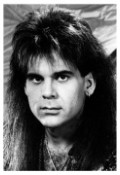 The next step was to apply for the school; that was in the winter of 1986. At the time MI was in what is now known as the Golden Era of the school. During this period, the world’s greatest players from radio, film, and stage were instructors at the school. For example, one of the teachers was Howard Roberts, who performed with Bette Midler and Nancy Sinatra and was a part of Phil Spector's Wall of Sound, playing guitar on some of the most famous songs in pop music history. Another was Tommy Tedesco, a member of the Wrecking Crew, who also played guitar on literally thousands of recordings we all knew, including the theme songs from “Bonanza,” “The Twilight Zone,” “Green Acres,” “MASH,” and “Batman,” as well as Elvis Presley's '68 Comeback Special. Also an instructor was Frank Gambale, guitarist for Chick Corea’s Electric Band, They were all going to be my instructors -- that is if I got in. The next step was to apply for the school; that was in the winter of 1986. At the time MI was in what is now known as the Golden Era of the school. During this period, the world’s greatest players from radio, film, and stage were instructors at the school. For example, one of the teachers was Howard Roberts, who performed with Bette Midler and Nancy Sinatra and was a part of Phil Spector's Wall of Sound, playing guitar on some of the most famous songs in pop music history. Another was Tommy Tedesco, a member of the Wrecking Crew, who also played guitar on literally thousands of recordings we all knew, including the theme songs from “Bonanza,” “The Twilight Zone,” “Green Acres,” “MASH,” and “Batman,” as well as Elvis Presley's '68 Comeback Special. Also an instructor was Frank Gambale, guitarist for Chick Corea’s Electric Band, They were all going to be my instructors -- that is if I got in.
When I got the application in the mail, I also got a video of what life would be like living in Hollywood and going to the school. I must have watched it a thousand times. The application was not what I thought it was going to be either. Never once were my grades from high school or college ever mentioned on the application. There were no requests for transcripts, SAT scores, awards, or anything like that. All they asked for was my contact information, my history as a player, and a short recording of my playing. I sent it all in, and within a week I got a phone call telling me I was accepted! Wow! As they say on “American Idol,” I was going to Hollywood! Little did I know that my time at MI would be the hardest season of my life. The next thing I knew, in September of 1986, I was in Hollywood with three hundred other players from all over the world attending GIT at 6757 Hollywood Boulevard.
Once there, we were assigned to groups according to our incoming skill level. There were 10 different groups with #1 being the top and #10 being the bottom, and I was in #7. After attending the school for a couple of weeks, I found myself breezing through the beginning theory classes. After spending years being taught by Miss Siphers, I already know all that stuff! For years she drilled it into our heads, and once I was in Hollywood, it was second nature to me. One day a friend came up to me and started congratulating me for being moved to group #1. I had no idea it had happened until the school had posted the re-groupings. Me? In group #1? Shut Up! I can attribute that to Kathryn Siphers! While almost everyone else was struggling with music theory, I found myself helping others get a grasp of it. I could do it in my sleep thanks to her!
The building was not a fancy university level type place with the big beautiful grounds and “hallowed halls.” No, it was much like the set of “Fame” -- an old building on Hollywood Boulevard that was steeped in history and was originally Cafe Montmartre, built in 1922 as a hot spot for dining and dancing. By 1986, it was showing its age. In early 1987 the school was moved into a new facility on the other side of Hollywood Boulevard. It is a much nicer place, but to me it did not have the same vibe as the original place. What’s cool is my class is the only one that got to experience both places!
Unlike a typical university where a student could gain access to other people’s work to pass a class, we were entirely on our own. We either got it or we didn’t. We could not hide behind the photocopied work of someone who had gone before us because it was not about what was on paper; it was what came from our hands and ears via the instrument. It was hardcore, just like Miss Siphers. If I was going to make it at MI, I had to be hardcore, too. Little did I know she had been preparing me for my experience there.
On any given day we were surrounded by some of the world’s greatest players. It was not unusual to walk by a room and see Jeff Porcaro teach a guest class. He had been the drummer for the band Toto and had been a session player for hundreds of big star performers from Eric Clapton to Elton John to Bruce Springteen to Barbra Streisand. Another guest instructor was Steve Lukather, guitarist and founding member of Toto who has played on more hit records than any guitarist in history. There were so many greats walking around the place teaching that we could not keep up with them all. The best part of it was it helped us realize what was possible if we worked hard enough. Their greatness just rubbed off.
If we took it seriously, we would make it through to the end. When I started, there were 103 guitar players in my class. When I graduated, only 33 of us were left. Many came in thinking it was a rock star school, but it was anything but that. MI was, and I assume is still, a school that is about becoming a world class player. I don’t know how the culture there is now because most of the greats from the Golden Era have either passed away, retired, or moved on, but when I was there it was magical.
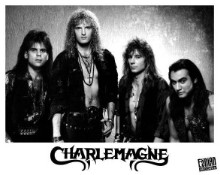 Not only was the school a magical experience, but so was the music scene in Hollywood. It was the 80s and was what I believe now to be the pinnacle of musicianship. Sure, we all had the big hair and were all bombastic to some degree, but the show was just there to support the music. During my time at MI, Raymond Barrett, the original vocalist from Attak who had moved with me to Hollywood to join me in pursuing our dream, formed a band with two other MI students that would become known as the band Charlemagne. It was Raymond on vocals, Ken Kowalski (PIT-Percussion Institute of Technology), Lee Bryan (BIT- Not only was the school a magical experience, but so was the music scene in Hollywood. It was the 80s and was what I believe now to be the pinnacle of musicianship. Sure, we all had the big hair and were all bombastic to some degree, but the show was just there to support the music. During my time at MI, Raymond Barrett, the original vocalist from Attak who had moved with me to Hollywood to join me in pursuing our dream, formed a band with two other MI students that would become known as the band Charlemagne. It was Raymond on vocals, Ken Kowalski (PIT-Percussion Institute of Technology), Lee Bryan (BIT-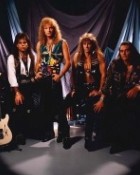 Bass Institute of Technology), along with me on guitar. Together we formed what would become something I am most proud of today. We were playing the clubs of the famous Sunset Strip such as The Roxy Theater, Gazzarri’s, The Whiskey A Go-Go, The FM Station, and my favorite place, the Troubadour, where such artists as Fleetwood Mac, Rod Stewart, Don McLean, George Carlin, Bette Midler, Billy Joel, Sheryl Crow, Neil Diamond, and many others had performed. Bass Institute of Technology), along with me on guitar. Together we formed what would become something I am most proud of today. We were playing the clubs of the famous Sunset Strip such as The Roxy Theater, Gazzarri’s, The Whiskey A Go-Go, The FM Station, and my favorite place, the Troubadour, where such artists as Fleetwood Mac, Rod Stewart, Don McLean, George Carlin, Bette Midler, Billy Joel, Sheryl Crow, Neil Diamond, and many others had performed. 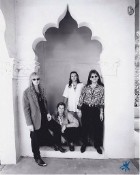 It was at the Troubadour where we caught the eye and ear of our future manager and what would lead to what could have been our big break. It almost was. We went on to negotiate what was at the time the largest deal ever for a new band with WEA – Warner Electra Atlantic Records. Alas, it was not meant to be, even though we had signed off on our part of the bargain. Around that time around 1993 there were a few of the industry’s top executives that were indicted by a federal grand jury for payola and other various illegal activities, one of which was our A&R rep at WEA. Needless to say, he went to prison, and our deal went into the round file. To make things worse, the Seattle Sound invaded the world around that time, and our style of music was basically dead. I had to move on. It was at the Troubadour where we caught the eye and ear of our future manager and what would lead to what could have been our big break. It almost was. We went on to negotiate what was at the time the largest deal ever for a new band with WEA – Warner Electra Atlantic Records. Alas, it was not meant to be, even though we had signed off on our part of the bargain. Around that time around 1993 there were a few of the industry’s top executives that were indicted by a federal grand jury for payola and other various illegal activities, one of which was our A&R rep at WEA. Needless to say, he went to prison, and our deal went into the round file. To make things worse, the Seattle Sound invaded the world around that time, and our style of music was basically dead. I had to move on.
After living through the Northridge earthquake in 1994, I moved to Orange County away from all the aftershocks. It was there that I bought the company I was working for and started my own medical courier business. It was not really what I had set out to do, but I’m not one to pass up an opportunity, especially when the music business was changing and Los Angeles was recovering from that massive quake. But I could still play guitar, and it was also around this time that I was asked by a friend to be a sub guitar player at Saddleback Church, founded by pastor Rick Warren, who went on to gain fame with the book “The Purpose Driven Life.” Saddleback was an 80,000 member church and was growing so fast they had to erect tents so they could have multiple services going on at the same time. It was also a very interesting transitional time for worship music because churches in Southern California were moving away from traditional choirs, organs, and hymns and toward rock bands playing what is now known as Contemporary Christian music. Oddly enough they really liked how I played, and I went on to become one of Orange County’s first-call guitar players. From about 1994 until 2006 I stayed busy playing at Saddleback and several other churches. It was something I really enjoyed because I got exposed to a lot more styles of music. Additionally, I was offered to play with a 22-piece Big Band called the Downbeat Express. Once again, I got to cash in on the experience of playing in a jazz band like I did at East Burke. Once again, I was using what I not only had learned from being at Musicians Institute but also from Kathryn Siphers and Lynn McCotter.
As a side note, one of the best gigs I got through those connections was playing with famed Elvis impersonator Raymond Michael. Now that was fun! He was so good at what he did that he had a huge fan base that actually pretended he was really Elvis. It was not unusual to play for a crowd of 9000 screaming people that came to see Elvis! It was AWESOME! The best part of all this transitional period of my life was beginning to write, record, and perform with my wife Tara. She is a most excellent writer and vocalist who is anything but hard rock. Again, my ability to work with her in a meaningful manner can be traced back to my roots at East Burke.
In 2005 when the Real Estate bubble was beginning to leak, the music business had basically left Los Angeles, and I had had enough of the courier business, so we decided to close the business, make the move to Nashville where I would once again step into the unknown as far as my career goes. We also did not want to raise our 5-year-old daughter in California, so it was time to go. It was here in Nashville that all those experiences from my time at East Burke, CVCC, Hollywood, and Orange County would take on a whole new meaning.
Through my connections in the business in California, I got a job in the pro audio business as the “Director of Contracting,” doing system design, engineering, and installation of AV systems mainly for churches. Once again, the training and experience I had gained from my East Burke teachers Kathryn Siphers, Lynn McCotter, and now Chet Pack was paying off in a whole new way. I worked in that same position for several companies, some of which were the biggest and best in the industry.
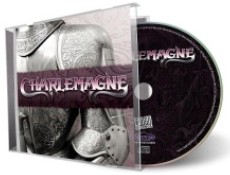 In 2009 I got a call from a new label called Eonian Records that wanted to start releasing the recordings from as many unsigned bands as they could from the 80s era of Hollywood rock and roll, and he wanted Charlemagne to be the first one. I thought it was a joke some old friend was playing on me until the gentleman started naming our songs that he had gotten from a demo tape he acquired from a collector in Japan. He was serious, so I set out remixing all the recordings that were supposed to go on the original Warner Brothers release. It was released and became a pretty big deal in the Hair Metal community worldwide. It started to become real when we began getting rave reviews in some magazines as well as royalty checks from BMI showing all the countries where it was being played on the radio. Over 50 countries were always named on the royalty statements: European countries, Japan, Australia, Russia, Estonia, and the UK to name a few. One of the cuts I wrote, “Is It Ever Easy,” was even used on a TV show in the UK. I never knew the name of the program, but it was shown on the royalty statements as a sync-license. The ironic part is it never got played on the radio once in America. That’s corporate media at its finest. In 2009 I got a call from a new label called Eonian Records that wanted to start releasing the recordings from as many unsigned bands as they could from the 80s era of Hollywood rock and roll, and he wanted Charlemagne to be the first one. I thought it was a joke some old friend was playing on me until the gentleman started naming our songs that he had gotten from a demo tape he acquired from a collector in Japan. He was serious, so I set out remixing all the recordings that were supposed to go on the original Warner Brothers release. It was released and became a pretty big deal in the Hair Metal community worldwide. It started to become real when we began getting rave reviews in some magazines as well as royalty checks from BMI showing all the countries where it was being played on the radio. Over 50 countries were always named on the royalty statements: European countries, Japan, Australia, Russia, Estonia, and the UK to name a few. One of the cuts I wrote, “Is It Ever Easy,” was even used on a TV show in the UK. I never knew the name of the program, but it was shown on the royalty statements as a sync-license. The ironic part is it never got played on the radio once in America. That’s corporate media at its finest.
In 2015 we were asked to provide two more Charlemagne cuts for a new 4-CD compilation set called “Rock and Roll Rebels of the Sunset Strip.” We of course jumped at the chance. All of our Charlemagne music is now available on iTunes, Amazon Music, Apple Music, Pandora, and Spotify for anyone to check out.
From 2006 until 2012 I had developed quite a few connections here in Nashville, and another opportunity to do something extraordinary dropped into my lap. I met a gentleman from a record label in New York that was affiliated with Sony music and was asked to attempt to modernize a collection of vintage country music that was originally recorded for Armed Forces Radio in the 50s, 60s, and 70s so they would be marketable on current radio. I of course said I could do it, even though I didn’t know how it would turn out. The purpose of doing it was to take all these old unreleased mono recordings and make them stereo for modern radio so they could sell them. The only way to do it was to add additional vocals and instruments to these original recordings, using the same layering techniques I had developed in Hollywood. I called it modernizing. And it worked! Big music and big vocals created something really new from something really old. I worked with my old Charlemagne friend Raymond Barrett and his wife, Jillian, and we were the first people in the world to do it. It is an accomplishment that others have attempted to duplicate but never quite matched. We worked on recordings by such artists as Waylon Jennings, Mel Tillis, Ferlin Husky, Connie Smith, and Faron Young. The Faron Young record included the cut “You Don’t know Me,” made famous by Ray Charles. It was never released by Faron Young until we made it the title cut of the album. This recording was the first release of its kind, and it went on to birth two #1 hits on the traditional country radio charts, became the #1 selling CD at Cracker Barrel, and gained worldwide appeal. That thing sold like crazy! Cracker Barrel has a policy of keeping a CD on the shelves for only 90 days, but they made an exception for our recording and made multiple reorders.
Once word got around on what I was doing, a fire storm was started in Nashville, and the buzzards started to circle. The next thing we knew, family members of some of the artists we had focused demanded that they be the ones to produce their respective family recordings instead of me. When their attorneys and managers started to call, I was suddenly out of the race. However, it is worth noting that our recording was far more successful that any of theirs. Cracker Barrel rejected them, saying they “did not have the sound or the vibe” of the Faron Young recording we had made. One of the family members didn’t have clearance from the label to release anything, and it became a big legal mess. Hindsight being 20/20, I’m glad I was kicked to the curb.
Shortly after that experience. I was asked to create a new type of project for children, where I would compose and record classical guitar arrangements of classic Mozart compositions. It was to be a direct competitor to the Baby Einstein series that was supposed to make a baby smarter by exposing him or her to classical music. I of course accepted the challenge, but I decided to give it a different twist. Instead of the style of making everything very cartoonish that would drive the parents crazy, I enlisted Lynn Duckett to provide the orchestral tracks, and I would compose and produce the final product into something that would make Baby a genius without driving Mom crazy with cartoon music. We finished the record and it came out quite well. It was released under the name “Baby Benjamin”--for Benjamin Franklin. Yet another one and done. It was later reported by the science community that listening to classical music did absolutely nothing for babies’ brains, so future projects were dropped by the label. Go figure.
In 2013, I had another opportunity to start my own business again. One of my clients from another job told me his church wanted me to install the new audio system in their sanctuary, but they did not want the company for which I worked. They only wanted me. So they gave me an ultimatum to either start my own company and do their project or they would look elsewhere. The decision to go on my own was made for me. How could I say no? At the company I was working for at the time, I had done something no other person or company had ever done before, and it brought a lot of attention to my approach to system design that I never dreamed would happen. I just did it because I thought it was the right thing to do. Basically, it involves using speakers originally used in football stadiums but in smaller venues like churches. And once again, it worked! For instance, four of them are all that is needed for Brigham Young University’s football stadium that seats 63,000 people. I first used two of them in a 1000 seat sanctuary. Everyone thought I was nuts, crazy, off my rocker etc.--until they heard the results.  That set of circumstances was what pushed me to start my own company, Centerline Audio Visual, Inc. My business has now done system design and installation all over the United States in various churches and other venues. I developed the new audio system for the National Corvette Museum in Bowling Green, Kentucky, where I designed and installed a 56 zone system that took the museum from feeling like a stuffy art museum to a place of fun and excitement--as it should be. I even do all the voice-overs for the commercials and announcements for the museum, making me the voice of the National Corvette Museum! That set of circumstances was what pushed me to start my own company, Centerline Audio Visual, Inc. My business has now done system design and installation all over the United States in various churches and other venues. I developed the new audio system for the National Corvette Museum in Bowling Green, Kentucky, where I designed and installed a 56 zone system that took the museum from feeling like a stuffy art museum to a place of fun and excitement--as it should be. I even do all the voice-overs for the commercials and announcements for the museum, making me the voice of the National Corvette Museum!
Other projects I have done include the audio system for the Sound and Light Show at the Mayan Pyramids of Chichén Itzá in Yucatán, Mexico. To this day I continue to offer high level system design, acoustic studies, and installation of systems anywhere the road leads, and even where there are no roads, including my current project in the African country of Uganda.
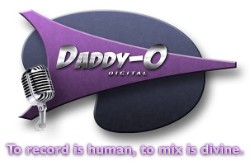 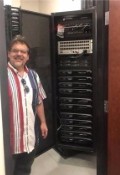 While the majority of my time is spent working at Centerline, I still continue to produce music for others under the name Daddy-O Digital Music and play live with a band called the Tenneseagulls. Currently on the original music front I am working on finishing an album of Contemporary Christian music with my wife, my daughter, and a few friends still in Hollywood. We are hoping to release that album this year under the name The Olivers. While the majority of my time is spent working at Centerline, I still continue to produce music for others under the name Daddy-O Digital Music and play live with a band called the Tenneseagulls. Currently on the original music front I am working on finishing an album of Contemporary Christian music with my wife, my daughter, and a few friends still in Hollywood. We are hoping to release that album this year under the name The Olivers.
To all those still in East Burke, never take one second for granted there. Soak it all in, do as many different things as you can. Play sports. Get involved in music and drama. Take all your classes seriously. If you are the least bit adventurous, you never know where you might end up or what you may get to do in and with your life that will be a result of your time spent at East Burke. I regret nothing and would do it all over again if I could. On second thought, I do have two regrets. The first is not being able to say thank you to Kathryn Siphers; the second is not being able to say thank you to Lynn McCotter. Sadly, they both have passed. I am happy to say that I did reconnect with Chet Pack and was able to say thank you to him.
My memories of East Burke will last forever, and it’s the enduring friendships that have meant the most to me.
Published May 2020
Home Page
|
|
|
|